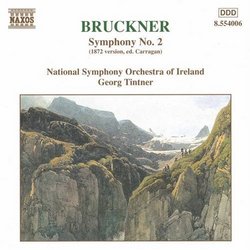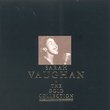| All Artists: Anton Bruckner, Georg Tintner, National Symphony Orchestra of Ireland Title: Bruckner: Symphony No. 2 (1872 ver., ed. Carragan) Members Wishing: 0 Total Copies: 0 Label: Naxos Release Date: 4/11/2000 Genre: Classical Style: Symphonies Number of Discs: 1 SwapaCD Credits: 1 UPC: 636943400623 |
Search - Anton Bruckner, Georg Tintner, National Symphony Orchestra of Ireland :: Bruckner: Symphony No. 2 (1872 ver., ed. Carragan)
 | Anton Bruckner, Georg Tintner, National Symphony Orchestra of Ireland Bruckner: Symphony No. 2 (1872 ver., ed. Carragan) Genre: Classical
|
Larger Image |
CD DetailsSimilar CDs
|
CD ReviewsI'M IN HEAVEN davidsbundler | Belleville, Ontario, Canada | 09/14/2000 (5 out of 5 stars) "BRUCKNER's 2nd SYMPHONYPERFORMANCE: 9 out of 10. RECORDING: 9 out of 10.THE VERSIONS OF THE 2nd SYMPHONY:There are 5 versions of this symphony. The first modern edition (by Robert Haas) is a composite of the 1877 version with elements of the 1872 version added. The second modern edition (by Leopold Nowak) apparently only indicates where the 1877 cuts should go and retains an error in the trumpet parts at the end of the first movement. (Often, conductors using the Nowak edition ignore many, if not all, of the cuts.) Since then, William Carragan edited the various versions of the 2nd and his editions supersede those of Haas and Nowak.Tintner presents us with the original 1872 version (by Carragan). Many of the changes in the later versions involve rewrites, cuts and reorchestrations. Without going into a full discussion of all the changes, it should be said that the 1872 version is superior to the others because:a) The scherzo comes second as break between the lyrical first movement and the slow movement;b) The original horn ending of the slow movement is magical compared to the clarinet of later versions; &c) There are no cuts.It is true, there is a minor problem of orchestral balance at the very end of the finale, but Tintner overcomes that as well.SUMMARY:This CD lives up to the high standards that Dr. Tintner and Naxos have set. I hope that it will discourage the use of the later versions of this symphony. I heartily recommend the entire series to all those who are unfamiliar with the composer and to comparative "Brucknerheads"." The Carragan Edition Howard G Brown | Port St. Lucie, FL USA | 01/05/2001 (5 out of 5 stars) "This is actually the second recording of the Carragan Edition of Bruckner's Symphony No.2. Eichorn and the Linz Bruckner Orchestra offer this edition in two different releases. One, a two-disc set, also includes the 1873 revision of 1872. In 1873 the scherzo was moved to the more familiar third movement position. The other touches are too subtle to note, and I'm not sure anyone but a Bruckner scholar could spot the changes.The Eichorn recording was also released coupled with rehearsal sessions (of 1872) on a second disc. Either way, Eichorn and his orchestra are equal to the challenge Tintner offers -- but Tintner on Naxos has a decided advantage in price. If you already own one of the Eichorn versions there is no reason to replace it. For those first coming to this version of the Bruckner Second, choose Tinter without a moment's reservation... !" Original version, as composer intended it to be- Todd Nolan | Seattle, WA USA | 07/19/2008 (5 out of 5 stars) "Although not a new release, and so less likely to be of help to potential buyers of the disc, I nevertheless feel the need to rave about this performance since a classical journal failed to even mention the Naxos/Tintner recording while recommending only the Eichorn in a Bruckner symphony overview.
Tintner's & Eichorn's are the only two (that I can find) that use the Carragan 1872 original version, but Tintner gets so much detail out of his Irish orchestra compared to Eichorn's. I'm in the extreme minority in having the 2nd as my favorite of Bruckner (I also think his Missa Solemnis and Requiem are better than the 3 famous Masses), so I'm probably more likely to notice small differences with this than the other symphonies. I listen to it far more often, and though I can respect another opinion's praise of the Linz orchestra of Eichorn, the Tintner is too beautiful to be passed over. Some like Karajan's Berlin recording from the late '70s or '80s, and some favor Giulini's Vienna disc. They're also worthwhile, but I hear more and experience it more acutely with the late Tintner. Sorry to see this wonderful recording passed over without an honorable mention. Definitely desert island stuff." |

 Track Listings (4) - Disc #1
Track Listings (4) - Disc #1

